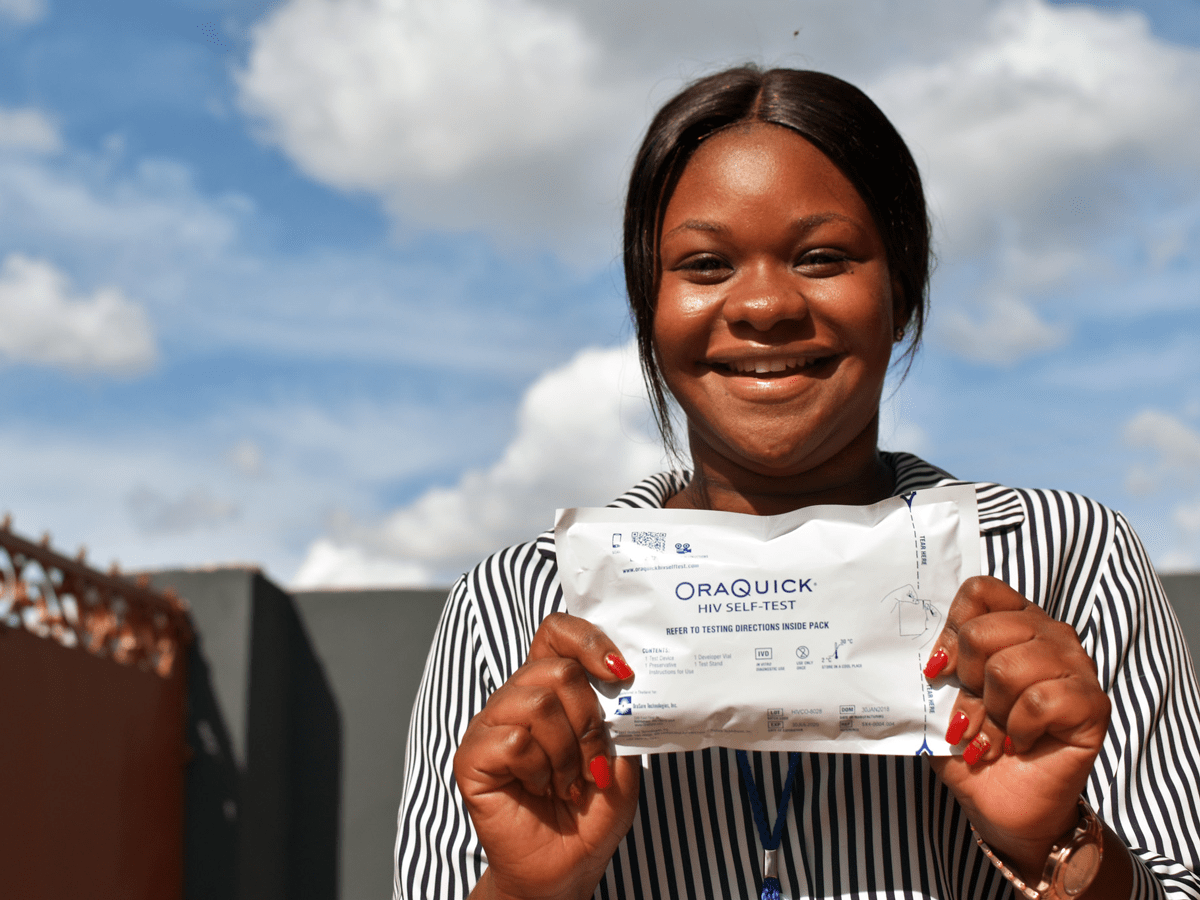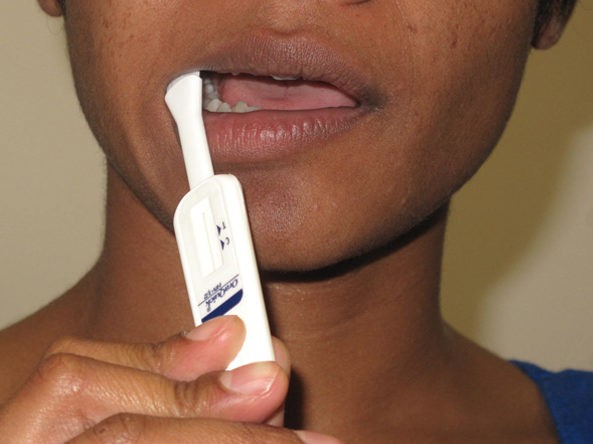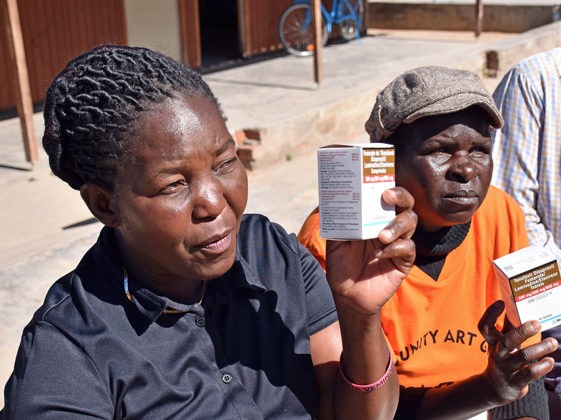Article and Study Summary:
Effect of facility-based HIV self-testing on uptake of testing among outpatients in Malawi: a cluster-randomised trial
Published in:
Lancet Glob Health. 2020;8(2):e276-e287.
DOI: https://doi.org/10.1016/S2214-109X(19)30534-0
Authors:
Dovel K, Shaba F, Offorjebe OA, et al.
Summary:
This cluster-randomized trial assessed the efficacy, acceptability, and cost of facility-based HIV self-testing (HIVST) among outpatients compared with standard and optimized provider-initiated testing and counseling (PITC) in 15 high-burden facilities in Malawi. Facilities were randomized to either receive standard PITC, optimized PITC—which aimed to better integrate HIV testing services into outpatient departments—or an HIVST intervention. The HIVST intervention included providing a group demonstration and distribution of kits for use in private booths in the outpatient department. The primary outcome of interest was the proportion of outpatients tested for HIV on the day of enrollment. The study found a significant increase in the proportion of outpatients who were tested for HIV in the HIVST intervention group compared to the standard PITC and optimized PITC groups. There were high levels of acceptability for HIVST, but this method did cost more per person newly diagnosed with HIV. These findings suggest that facility-based HIVST could be used to complement other facility-based testing strategies in settings with a high unmet need for testing.
Discussion Questions:
- How could the findings in this study impact policies on use of HIVST where you work?
- How would these findings be applied in programs you work with? Do you have any experiences to share?
Please share your thoughts and experiences with us in the comments section below.
Full Synopsis:
PDF version available in English, French, and Portuguese.
Study Summary
This cluster-randomized trial assessed the efficacy, acceptability, and cost of facility-based HIV self-testing (HIVST) among outpatients compared with standard and optimized provider-initiated testing and counseling (PITC).
Study Setting
- Fifteen outpatient departments at high-burden health facilities in central and southern Malawi, including district hospitals, mission hospitals, and health centers.
Methods
- Facilities were randomized (1:1:1) to either standard PITC per national guidelines, optimized PITC, or a facility-based HIVST intervention.
- Optimized PITC included additional training and job aids for healthcare workers, integrating HIV testing and counseling (HTC) into outpatient departments, and offering HTC in the morning before consultations began. Services included a 10-minute group health talk and one-on-one pre- and post-test counseling.
- The facility-based HIVST intervention included a 10-minute group health talk, a 15-minute HIVST demonstration with group pre-counseling, and distribution of HIVST kits for use in waiting spaces, with assistance available if needed. Temporary cardboard standing booths were used as private spaces for HIVST, and disclosure of results was encouraged but voluntary. Those who chose to disclose their HIVST result were offered post-test counseling and referral to additional HIV services, including confirmatory testing for those who tested positive.
- Outpatients were encouraged to opt out of facility-based HIVST if they had ever tested HIV-positive, tested negative for HIV in the past month, felt uncomfortable using HIVST in the outpatient department, or were <15 years old.
- The primary outcome was the proportion of outpatients tested for HIV on the day of study enrollment.
- Secondary outcomes were HIV positivity (yield) among those tested, antiretroviral therapy (ART) initiation at three months among those newly diagnosed, acceptability of facility-based HIVST, adverse events, and costs.
- Primary and secondary outcomes were measured with an anonymous survey administered to a sample of outpatients exiting the facility. To determine ART initiation, participants who reported testing HIV-positive were asked to provide written consent and multiple identifiers that were used for subsequent chart reviews.
- Survey eligibility criteria included age ≥15 years, receipt of outpatient services on the day of the survey, receipt of all health services planned for that day, and being willing to consent.
Study Population and Follow-up
- Between September 2017 and February 2018, 22,342 outpatients received health services and 6,071 (27%) were approached for an exit survey. Of these, 5,885 (97%) were eligible and completed an exit survey: 1,951 in the standard PITC group, 1,837 in the optimized PITC group, and 2,097 in the HIVST intervention group.
- The median age of participants was 33 years (interquartile range 22–41), 62% were female, 86% had previously tested for HIV, and 52% had tested within the past 12 months.
- Among participants in the HIVST group, 6% reported previously testing HIV-positive, compared to 9% in the standard PITC group and 10% in the optimized PITC group.
Primary Outcome
- In the HIVST group, 51% of participants tested for HIV on the day of enrollment, compared with 13% in the standard PITC group and 14% in the optimized PITC group.
- The odds of HIV testing were significantly higher in the facility-based HIVST group compared with standard PITC (adjusted odds ratio [aOR] 8.52, 95% confidence interval [CI] 3.98–18.24) or optimized PITC group (aOR 6.29, 95% CI 2.96–13.38).
- Findings were similar across age and sex categories, with those aged 15–24 years showing the greatest benefit from facility-based HIVST compared with standard PITC (aOR 9.42, 95% CI 4.15–21.38).
Secondary Outcomes
- Of those who received HIV testing, there was no significant difference in yield, with 3% in the HIVST group, 2% in the standard PITC group, and 3% in the optimized PITC group newly diagnosed with HIV.
- In the HIVST group, 68% of newly diagnosed individuals initiated ART at three months (79% same-day initiation), compared with 83% in the standard PITC group (100% same-day initiation) and 100% in the optimized PITC group (50% same-day initiation), with no significant differences found between groups.
- Among those who tested, acceptability was significantly higher in the HIVST group, with 99% stating they would use the same testing strategy again, compared with 82% in the standard PITC group and 86% in the optimized PITC group (HIVST vs. standard PITC aOR 6.17, 95% CI 1.70-22.47).
- Among those who tested for HIV, 75% desired additional post-test counseling in the HIVST group, compared to 69% in the standard PITC group and 70% in the PITC group, but these differences were not statistically significant.
- In both the standard PITC and optimized PITC groups, 4% felt coerced to test, and around 1% felt coerced to disclose test results. No coercion was reported in the HIVST group.
- The mean cost per person who received an HIV test in the HIVST group was $4.99, compared to $2.44 in the standard PITC group and $4.79 in the optimized PITC group.
- The cost per newly identified positive case was $189 in the HIVST group, compared to $101 in the standard PITC group, and $156 in the optimized PITC group.
- The cost per person initiated on ART was $279 in the HIVST group, compared to $121 in the standard PITC group, and $156 in the optimized PITC group.
Critical Analysis
This cluster-randomized controlled trial found that offering facility-based HIVST in outpatient departments at high-volume health facilities increased the proportion of outpatients tested for HIV compared with standard and optimized PITC. The facility-based HIVST approach was very acceptable to participants and no coercion was reported. However, the HIVST intervention cost more per test performed and per newly identified positive case.
The following points should be considered when interpreting the study findings:
- This study was conducted entirely in outpatient departments; therefore, pregnant women, children <5 years, and emergency or inpatients were not included. It is unclear whether similar results would be seen in other facility-based settings.
- Outcome data were only collected on a subsample of outpatients willing to complete the exit survey, and HIV testing and test results were based on self-report, which is vulnerable to social desirability bias. This may have resulted in over-reporting of testing uptake and/or under-reporting of positive test results.
- While investigators were unable to demonstrate any significant differences in ART initiation among the testing strategies, power was limited due to small sample size, and a lower percentage of ART initiation was observed in the HIVST group. However, a higher absolute number of people started ART in the HIVST group as more people were newly identified as living with HIV with the HIVST approach.
- Only 7% of newly diagnosed individuals in the HIVST group discussed their HIV self-test result with the outpatient provider on the day of testing. Nonetheless, most of these individuals received same-day confirmatory testing and initiated ART.
- This study was performed in a high-prevalence setting, where outpatient PITC was recommended. The cost per HIV-positive person found with outpatient PITC would likely increase in lower prevalence settings, where targeted testing is often prioritized.
Implications
This cluster-randomized controlled trial in Malawi found that offering facility-based HIVST in outpatient departments significantly increased the proportion of outpatients tested for HIV compared with standard PITC or optimized PITC approaches. This testing method was acceptable to participants, but cost more for each new person living with HIV identified. HIVST is generally recommended as an approach to expand the reach of HIV testing programs outside of facilities, but the results from this trial suggest that facility-based HIVST could complement other facility-based testing strategies in settings with a high unmet need for HIV testing. The increased costs of implementing such a strategy will have to be weighed against the benefits of identifying more outpatients with HIV.
This article synopsis was written by Cassia Wells. Share your thoughts on this article or suggest an article for Journal Club by emailing her at caw2208@cumc.columbia.edu
Articles of Note:
- Incident HIV among pregnant and breastfeeding women in sub-Saharan Africa: a systematic review and meta-analysis
- Dolutegravir-based Antiretroviral Therapy for Patients Coinfected with Tuberculosis and Human Immunodeficiency Virus: A Multicenter, Noncomparative, Open-label, Randomized Trial
- Infectious morbidity of breastfed, HIV-exposed uninfected infants under conditions of universal antiretroviral therapy in South Africa: a prospective cohort study








